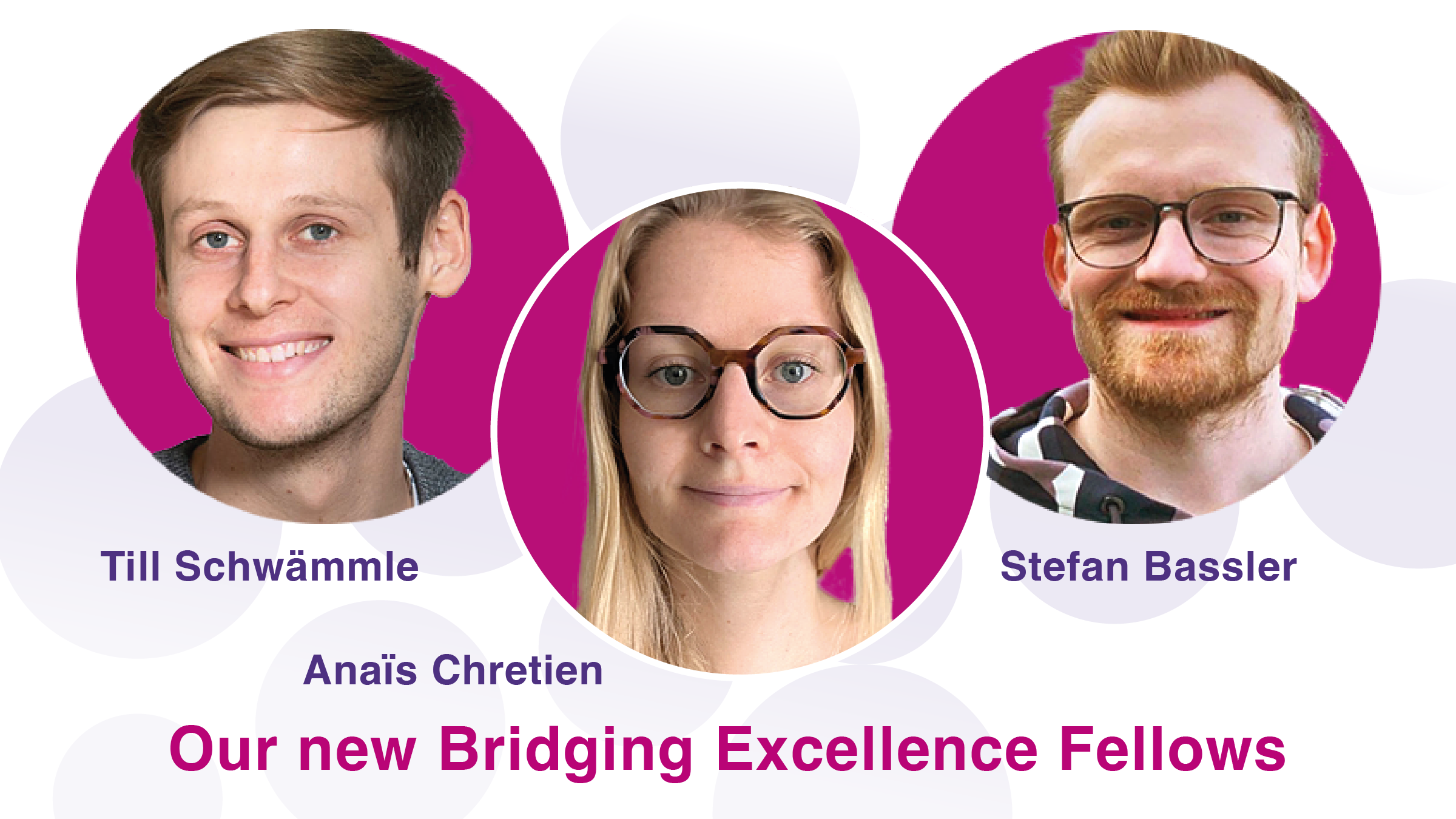Pioneering Transatlantic Collaboration

The latest cohort of Bridging Excellence Fellows has officially launched their postdoctoral journeys, marking a significant milestone in transatlantic scientific partnership
Our postdoctoral researchers are located on both sides of the Atlantic, with two fellows based at Stanford University and one at EMBL. Each fellow is working on a joint project that bridges the expertise of both institutions, creating a rich and truly international research experience.
The fellowship runs for three years, with each fellow primarily affiliated with one institution while spending extended periods at the partner site. This structure allows them to engage deeply with both research environments, experience different academic cultures, and form lasting cross-border collaborations. In addition to the fellowship itself, they receive funding to support research materials, travel between institutions, and attendance at international conferences.
We are proud to welcome the fourth cohort of Bridging Excellence Fellows:

Anaïs Chretien, with Soichi Wakatsuki (Stanford) and Matthias Wilmanns (EMBL)
“Long-range reaction intermediates channeling in multi-enzyme complexes and allosteric regulation”
Structural biology is gradually shifting from a static perspective to a more dynamic one, reflecting the true nature of macromolecules. Advances in cutting-edge techniques for time-resolved studies now allow us to capture the structural rearrangements associated with protein reactions. Stanford University and EMBL have been at the forefront of these innovations, developing a range of powerful tools – particularly in time-resolved crystallography, electron microscopy, and spectroscopy. These advancements are pushing the boundaries of science, enabling structural biologists to gain deeper insights into molecular dynamics and their influence on protein reactions. “In my research, I aim to explore the remarkable mechanism of allostery and substrates channeling in multi-enzyme complexes and its associated dynamics, utilizing the state-of-the-art tools developed at both institutions.”
“The project will leverage cutting-edge methodologies available at Stanford University and the EMBL Hamburg Unit, particularly within the laboratories of Soichi Wakatsuki and Matthias Wilmanns. Methods will range from single particle cryo-EM and time-resolved crystallography to absorption spectroscopy and fluorescent lifetime imaging, in order to provide a comprehensive understanding of substrate channeling and allosteric regulation in multi-enzyme complexes”
Read more

Stefan Bassler, with Dmitri Petrov (Stanford), Alexander Aulehla and Lars Steinmetz (EMBL)
“Assessing the inter-kingdom conservation of lifespan variants evolved in yeast ”
Age-related diseases such as cancer, cardiovascular, and neurodegenerative disorders significantly impact quality of life and strain healthcare systems. Yet, eliminating cancer alone would only extend life expectancy in developed countries by about three years, due to the rise of other age-related conditions. This highlights the need to understand the genetic pathways that directly regulate lifespan. While lifespan is a highly variable trait shaped by evolution, its underlying mechanisms remain unclear. Studies in budding yeast (Saccharomyces cerevisiae) have uncovered key principles of cellular aging and identified genetic and chemical interventions that also extend lifespan in organisms like nematodes, fruit flies, and mammals. “These findings suggest that ancient lifespan-regulating pathways are conserved across species—pathways we aim to systematically map in my project.”
“The Bridging Excellence Postdoctoral Fellowship allows me to combine the Petrov lab’s expertise in evolutionary biology at Stanford with the Aulehla lab’s insights into developmental timing and the Steinmetz lab’s strengths in tool development at EMBL. This collaboration will advance my systems evolution approach by leveraging the complementary strengths of Stanford and EMBL to explore new frontiers in life sciences.”

Till Schwämmle , with Arnaud Krebs (EMBL) and Anshul Kundaje (Stanford)
“Learning the cis-regulatory code at single-molecule resolution”
Our genetic code contains the instructions necessary for developing from a single cell into a complex multicellular organism. However, this regulatory information is not stored in a straightforward, easily accessible format. To uncover how DNA sequence controls genome regulation in a context-specific manner, researchers have developed deep learning-based approaches. Yet, current models are constrained by the reliance on sequencing techniques that capture only relative frequencies. “My research will leverage single-molecule data to predict binding events at absolute frequencies, offering unprecedented precision in quantifying regulatory mechanisms. By shifting from relative to absolute measurements, we can build a much clearer picture of how gene regulation works at the molecular level. These insights will not only improve our understanding of natural regulatory processes but guide our efforts to design synthetic DNA sequences with desired characteristics.”
“Bringing together the expertise of two renowned research institutions, Stanford University and EMBL, the Life Science Alliance postdoctoral fellowship provides a unique opportunity to bridge computational and experimental research across the Atlantic.”
Read more
Advancing Science Across Borders
The opportunity to work within both the EMBL and Stanford research ecosystems offers an exceptional and enriching experience. Fellows benefit from the depth and diversity of two world-leading institutions, each known for their cutting-edge science and innovative thinking.
“Being a Bridging Excellence Fellow means more than just working between institutions—it’s about forging a scientific bridge that connects disciplines, cultures, and continents,” says Lars Steinmetz, Director of the Life Science Alliance. This dynamic collaborative model encourages the free flow of ideas and expertise, driving forward scientific discovery and global impact.